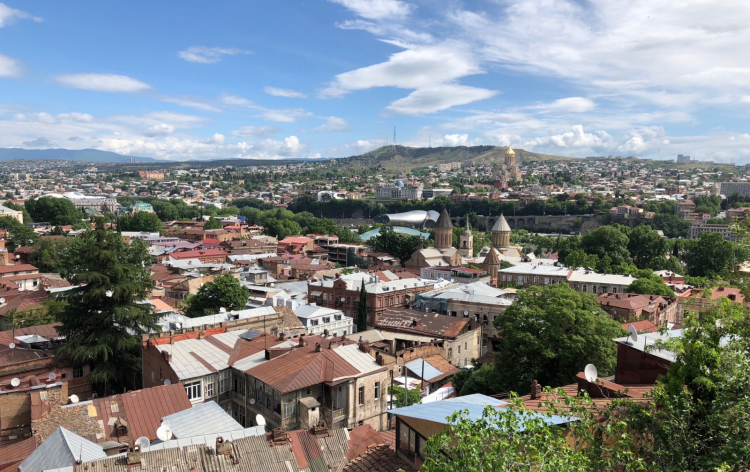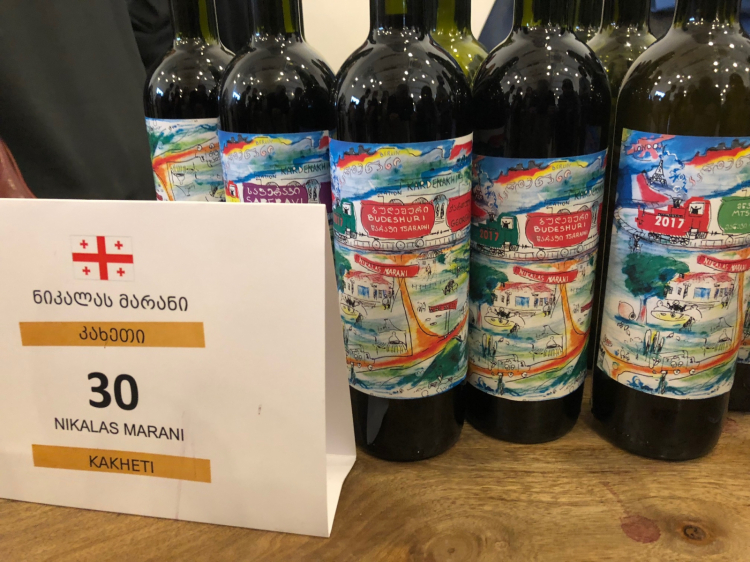First, forgive my ignorance. Who would have thought that Georgia was such a beautiful and welcoming country? Now that spring is in full swing, the landscape of this part of the Caucasus stretches along the wide, 500-km long green plateau. It is scarcely populated and there’s a pleasant breeze blowing. There are under 5 million inhabitants and every year they welcome one million tourists, always with a prompt smile and glasses ready to for a toast.
Georgia is a small heaven a 4-hour flight from Italy: technically, it’s still in Europe and the nice thing is this country doesn’t require expensive and complicated visa documents to be explored. It’s squeezed between two seas and two mountain ranges. There’s the Black Sea to the west, and the Caspian Sea to the east, though it has no access to it. The 5600 metre peaks of the Greater Caucasus cover most of the northern border with Russia, protecting from the icy Siberian currents, while the Lesser Caucasus marks the southern border with Turkey, Armenia and Azerbaijan, and shields from the hot winds that would otherwise come from Persia. The soil and climate in this basin are very similar to our own.
Who would have thought that the capital, Tbilisi, is a small Jerusalem? All those orthodox and Armenian churches, the synagogues, the mosques and the Zoroastrian temples, the colourful caravanserai and the scenic houses hanging above the Mtkvari river. It’s a gem set in a country that unfortunately is still mostly known because of its skirmish with Russia (South Ossetia and Abkhazia are two contended regions, for which hundreds of soldiers died only a decade ago) and, in our world, for the myth that has it as the global cradle of wine.

Tbilisi seen from the Old Town
We first heard of this theory from a wine producer on the border between Italy and Slovenia,
Josko Gravner, some 15 years ago. He was the one to nourish, in Italy, the legend of Georgia and of wines in amphorae, giving life to splendid nectars (most of all his single cultivar
Ribolla and his blend
Breg, which he then stopped producing in 2012). Then came a series of followers who started making wine in the same way, from Collio to Pantelleria.
Yet is Georgia really the world’s cradle of wine? Thanks to the work of the Georgian National Tourism Administration and Georgian National Wine Agency, we learnt that historians, archaeologists and paleo-botanists from all around the world agree that over here, people would toast with fermented grape juices already 8000 years ago. Those were the days of Shulaveri and this corridor was already a crowded point of passage between Siberia and Persia, the West and China.
Proto-Georgians were among the first to settle and domesticate vines. This is proven by the continuous spectrometry and chromatography research, experiments that recover organic matter that can be associated with wine, on artefacts from 6000 years before Christ, that is to say 5000 years before wine first became a custom in continental Europe. If then you took it upon yourselves to dig into Bronze Age tombs (3300-1200 B.C.), you’d find plenty of bones holding cups. They were meant to bring wine to the afterlife.
The only question that still has no solution is whether wine was first born in current Georgia or in neighbouring Armenia. For sure, Georgians are historically a more nonmigratory people than their neighbours from Yerevan, who have a stronger nomadic inclination and therefore are less inclined to depend on the fruits of the earth. This changes little of the basic issue, however: Caucasus is the world’s undisputed cradle of wine, an awareness that in the past decade has been drawing greater attention, so much so it has become fashionable.

Some bottles tasted at natural wines’ fair Zero Compromise, on the 11th May in Tbilisi
In order to understand this, one just had to participate in
Zero Compromise, a very crowded wine fairthat took place last week at
Fabrika in Tbilisi, a building that strongly recalled Berlin. There were around 60 producers of organic and biodynamic wines, a “natural” percentage that still only counts for 7% of the national production, but it’s growing quickly. There were also lessons on the virtues of Georgian wines. They were held by sommeliers from prominent restaurants (especially Nordic ones like
Noma or
Amass), important Italian and American distributors (including
Luca Gargano of
Velier, who first sensed the Georgian nouvelle vague two decades ago) and reporters from the New York Times down.
Translated into English by Slawka G. Scarso
See part two
The boom of Georgian wines